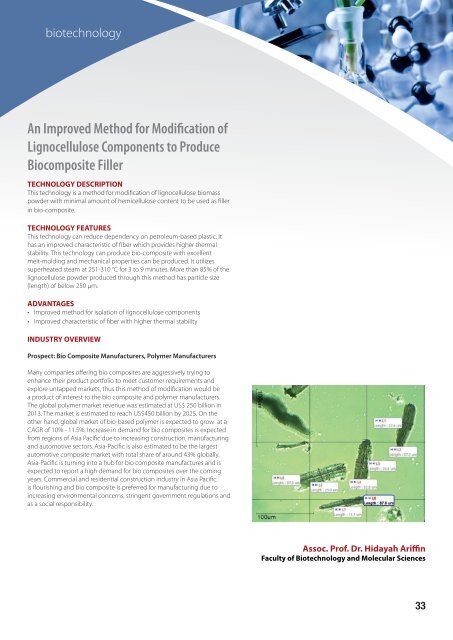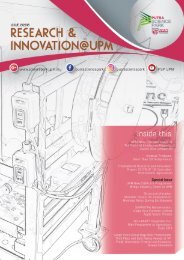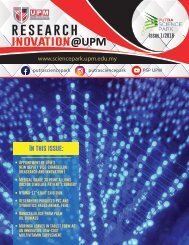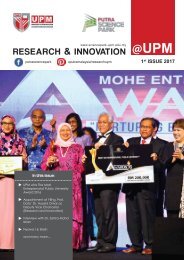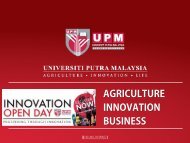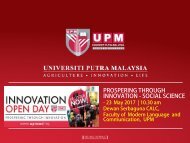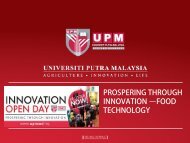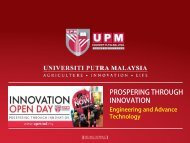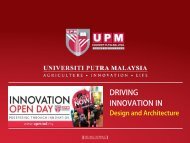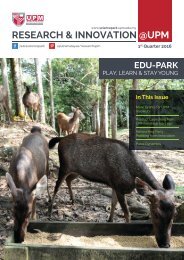Innovation directory 4th edition
You also want an ePaper? Increase the reach of your titles
YUMPU automatically turns print PDFs into web optimized ePapers that Google loves.
iotechnology<br />
An Improved Method for Modification of<br />
Lignocellulose Components to Produce<br />
Biocomposite Filler<br />
TECHNOLOGY DESCRIPTION<br />
This technology is a method for modification of lignocellulose biomass<br />
powder with minimal amount of hemicellulose content to be used as filler<br />
in bio-composite.<br />
TECHNOLOGY FEATURES<br />
This technology can reduce dependency on petroleum-based plastic. It<br />
has an improved characteristic of fiber which provides higher thermal<br />
stability. This technology can produce bio-composite with excellent<br />
melt-molding and mechanical properties can be produced. It utilizes<br />
superheated steam at 251-310 °C for 3 to 9 minutes. More than 85% of the<br />
lignocellulose powder produced through this method has particle size<br />
(length) of below 250 µm.<br />
ADVANTAGES<br />
• Improved method for isolation of lignocellulose components<br />
• Improved characteristic of fiber with higher thermal stability<br />
INDUSTRY OVERVIEW<br />
Prospect: Bio Composite Manufacturers, Polymer Manufacturers<br />
Many companies offering bio composites are aggressively trying to<br />
enhance their product portfolio to meet customer requirements and<br />
explore untapped markets, thus this method of modification would be<br />
a product of interest to the bio composite and polymer manufacturers.<br />
The global polymer market revenue was estimated at US$ 250 billion in<br />
2013. The market is estimated to reach US$450 billion by 2025. On the<br />
other hand, global market of bio-based polymer is expected to grow at a<br />
CAGR of 10% - 11.5%. Increase in demand for bio composites is expected<br />
from regions of Asia Pacific due to increasing construction, manufacturing<br />
and automotive sectors. Asia-Pacific is also estimated to be the largest<br />
automotive composite market with total share of around 43% globally.<br />
Asia-Pacific is turning into a hub for bio composite manufactures and is<br />
expected to report a high demand for bio composites over the coming<br />
years. Commercial and residential construction industry in Asia Pacific<br />
is flourishing and bio composite is preferred for manufacturing due to<br />
increasing environmental concerns, stringent government regulations and<br />
as a social responsibility.<br />
Assoc. Prof. Dr. Hidayah Ariffin<br />
Faculty of Biotechnology and Molecular Sciences<br />
33


